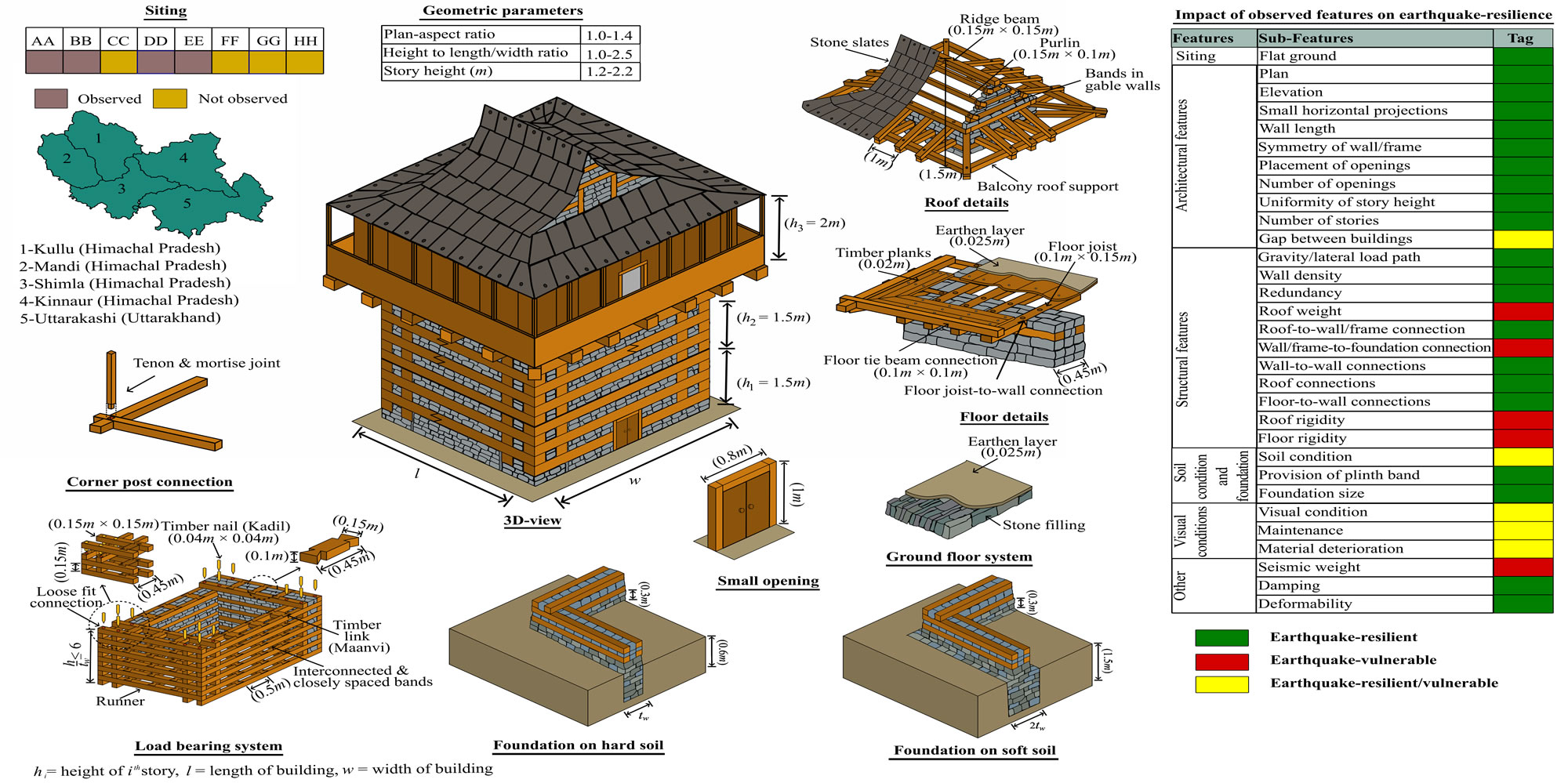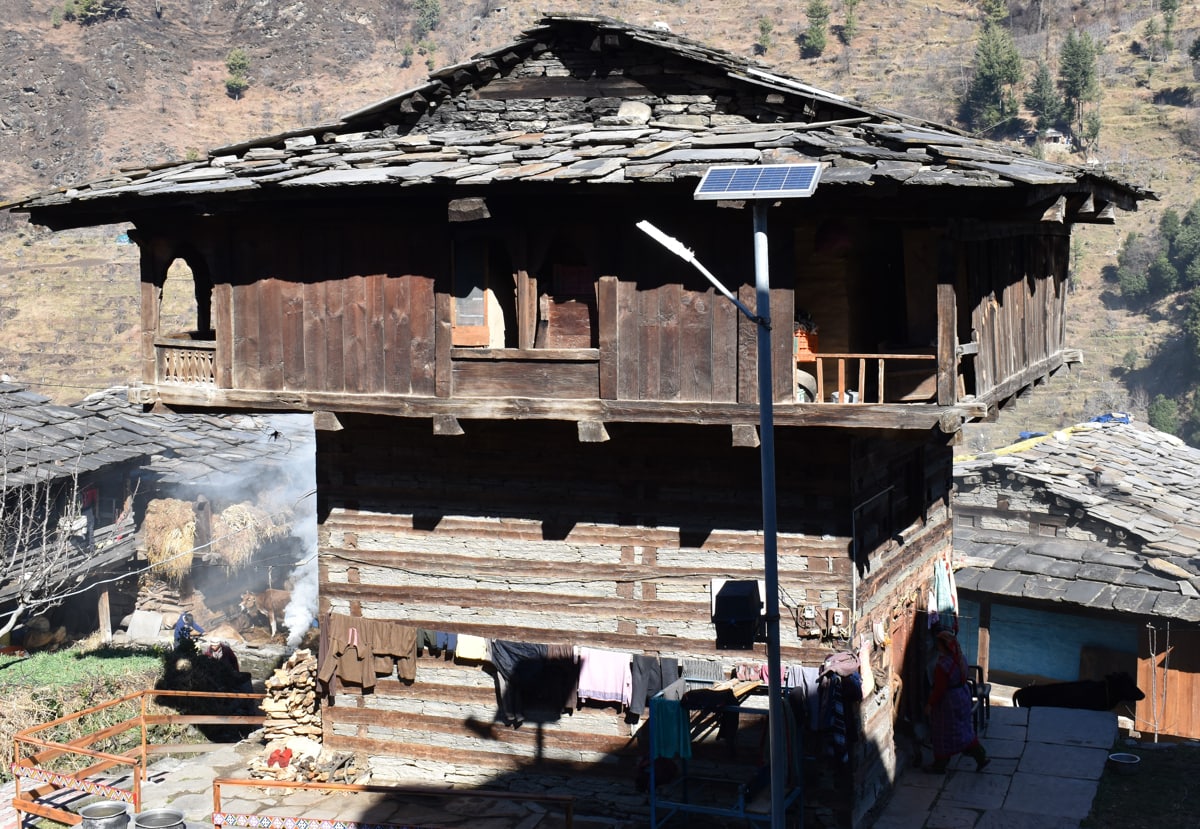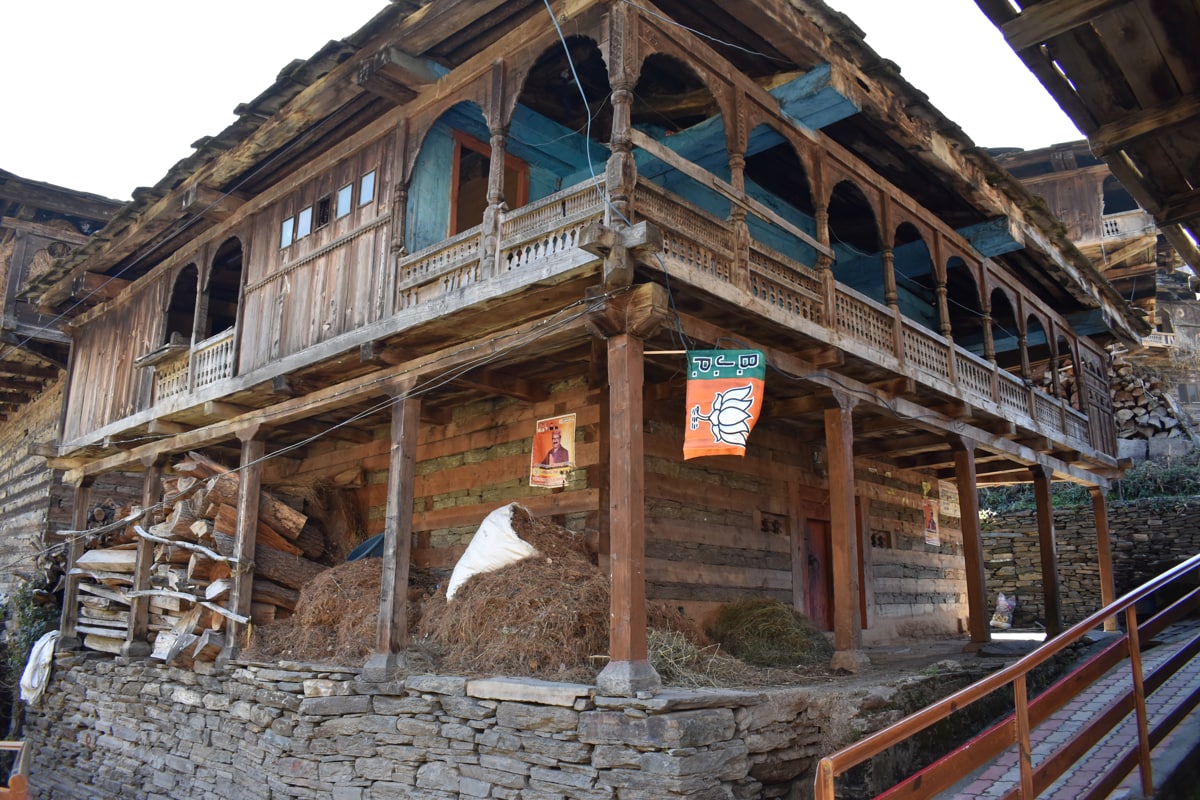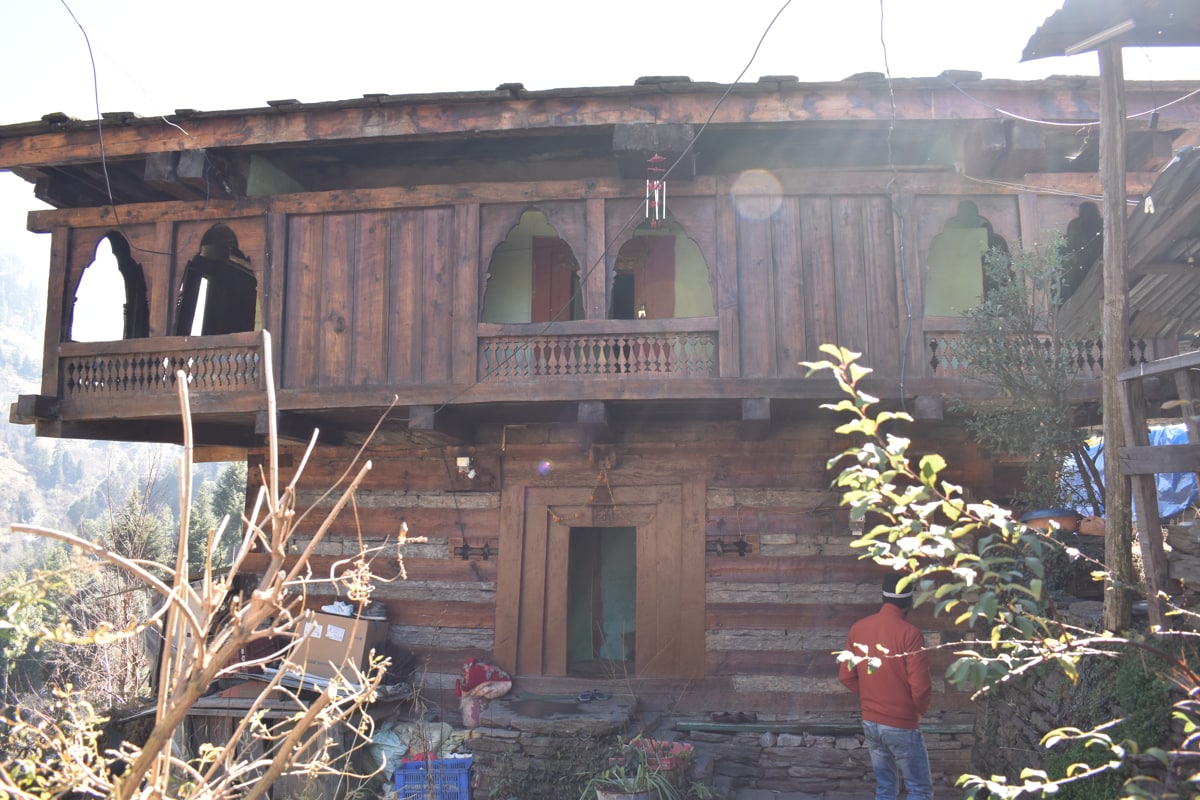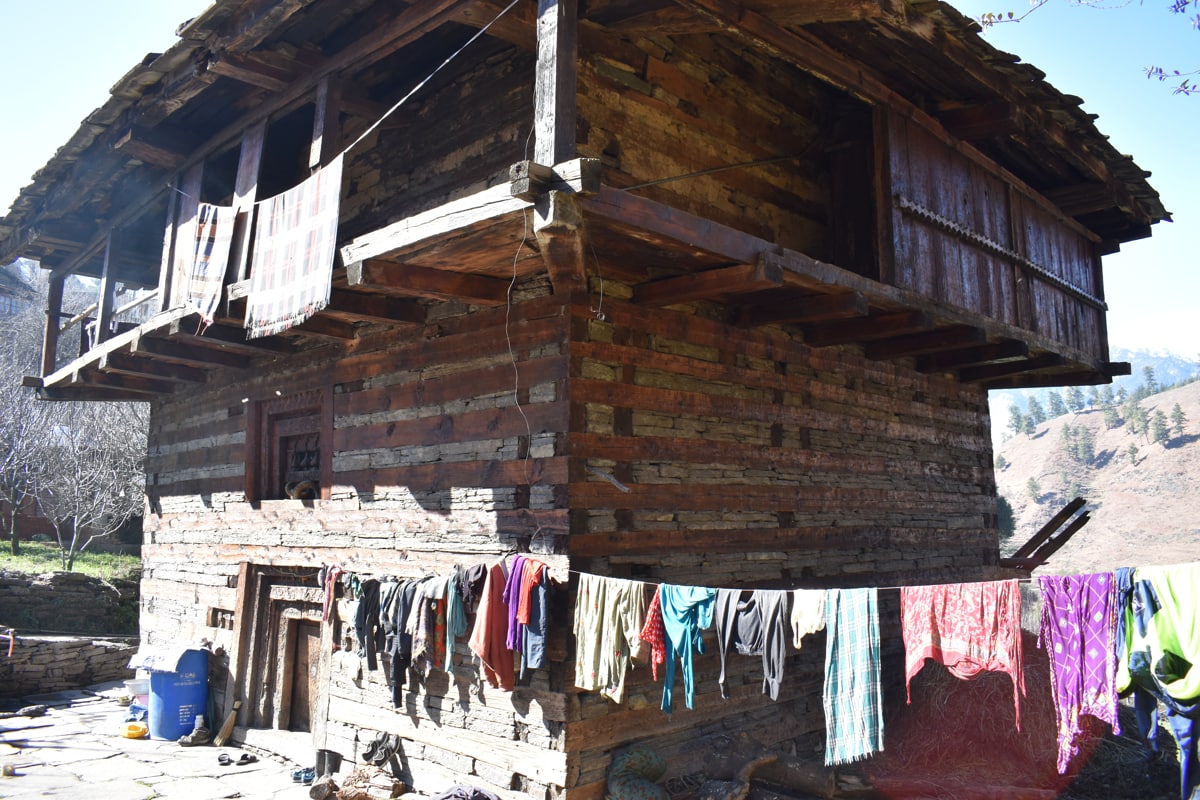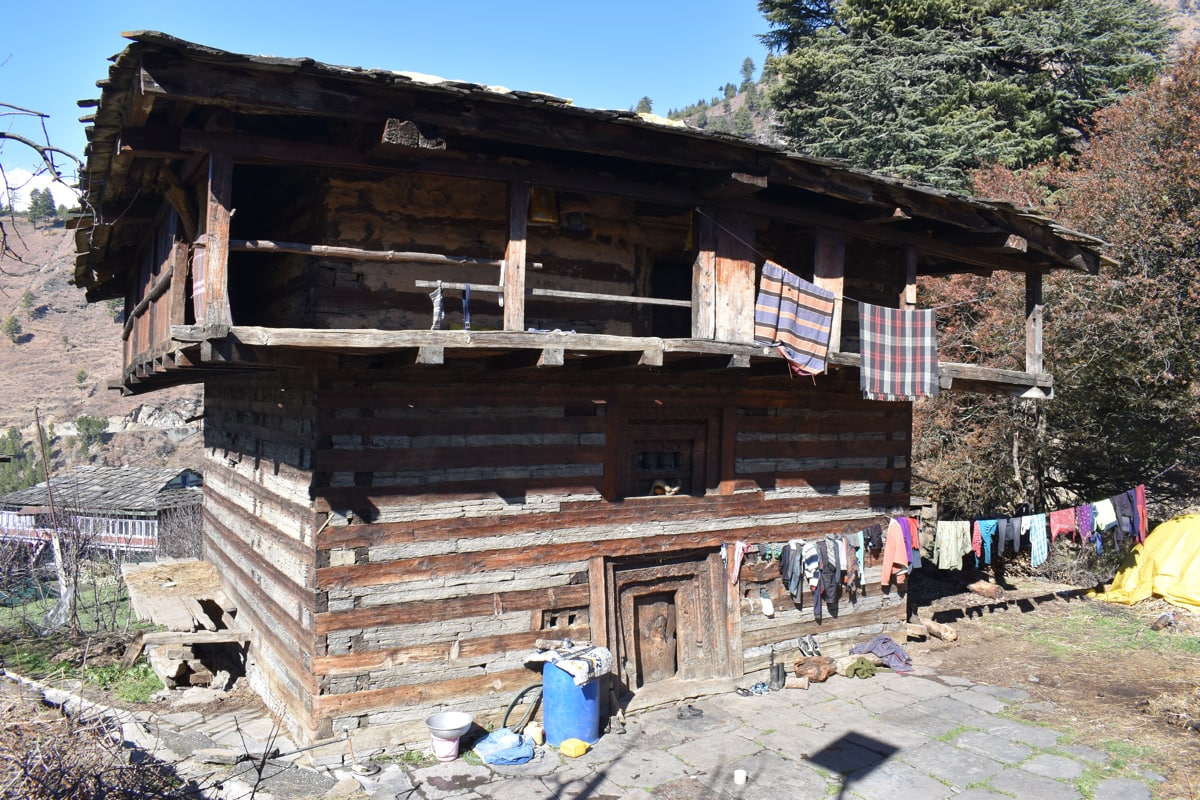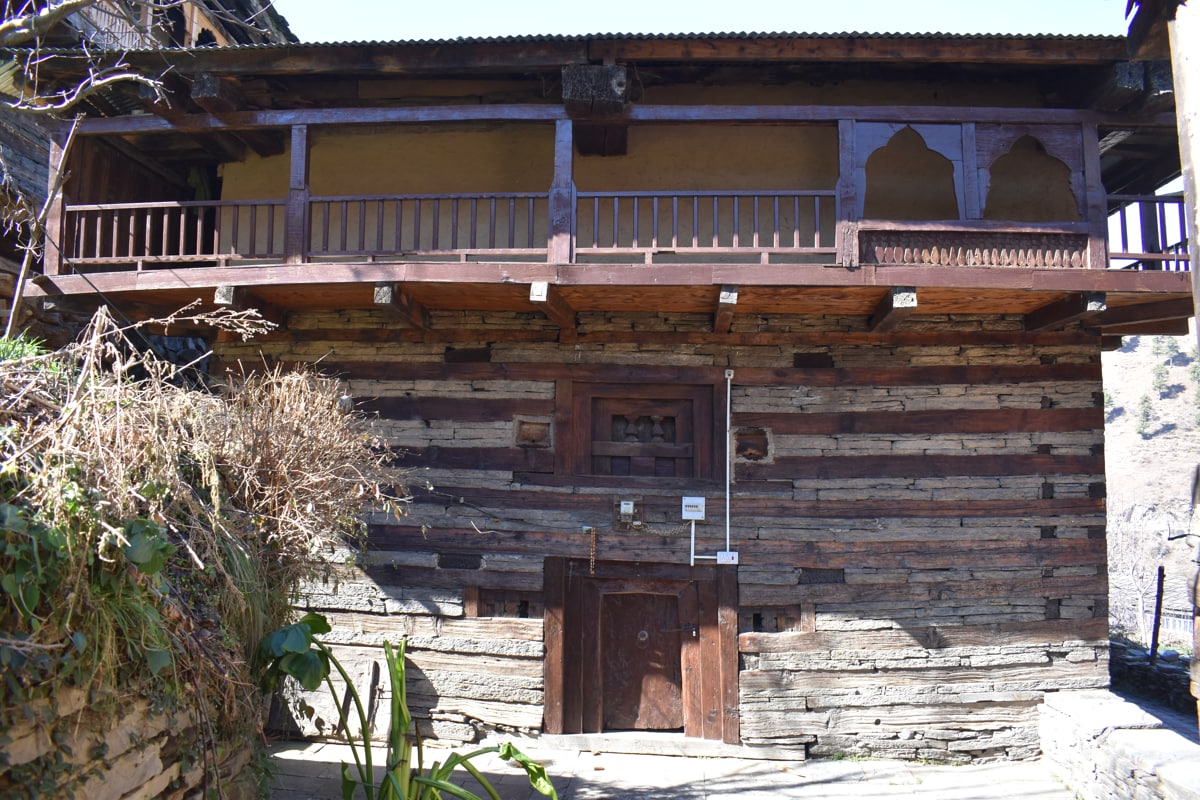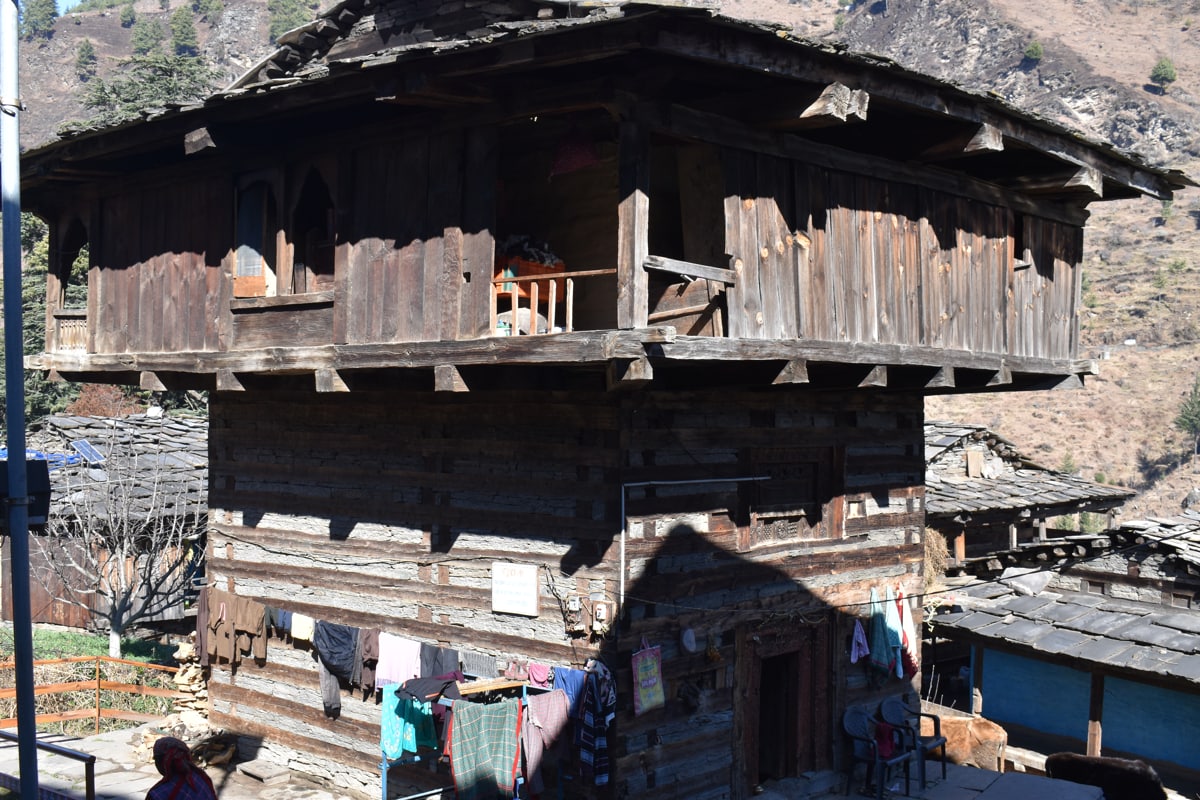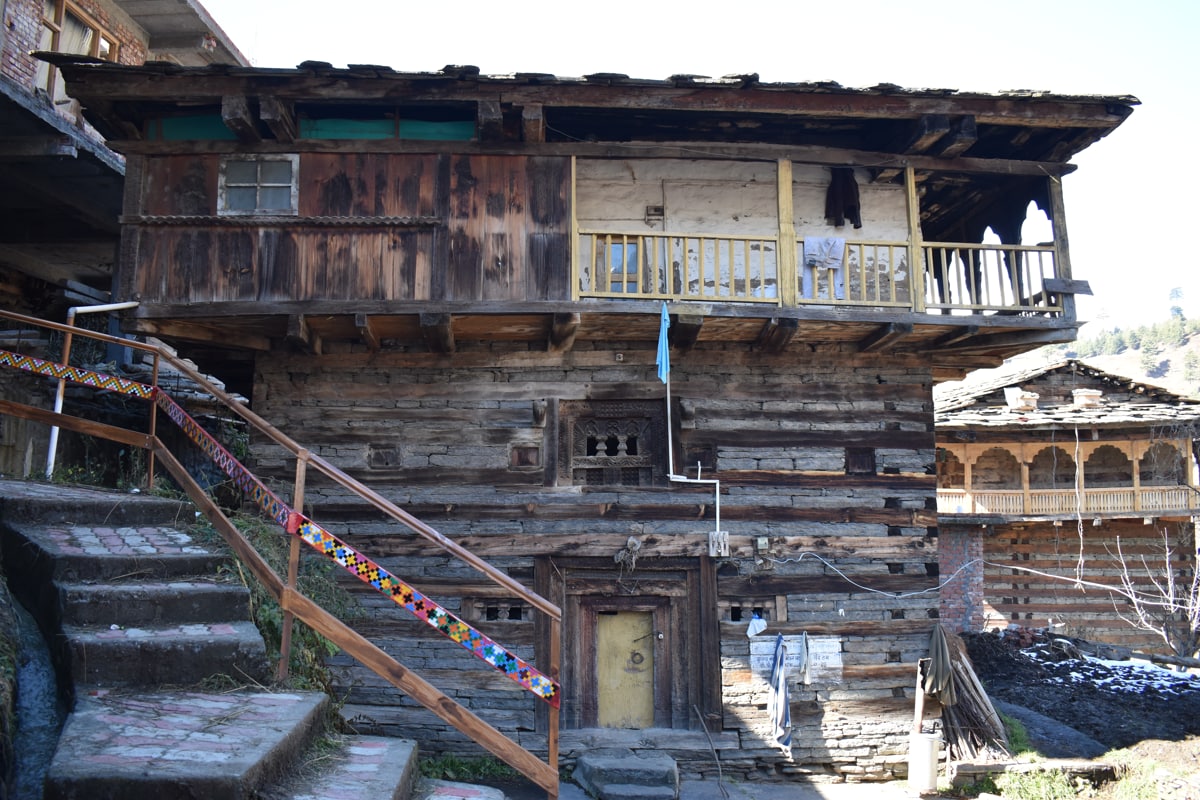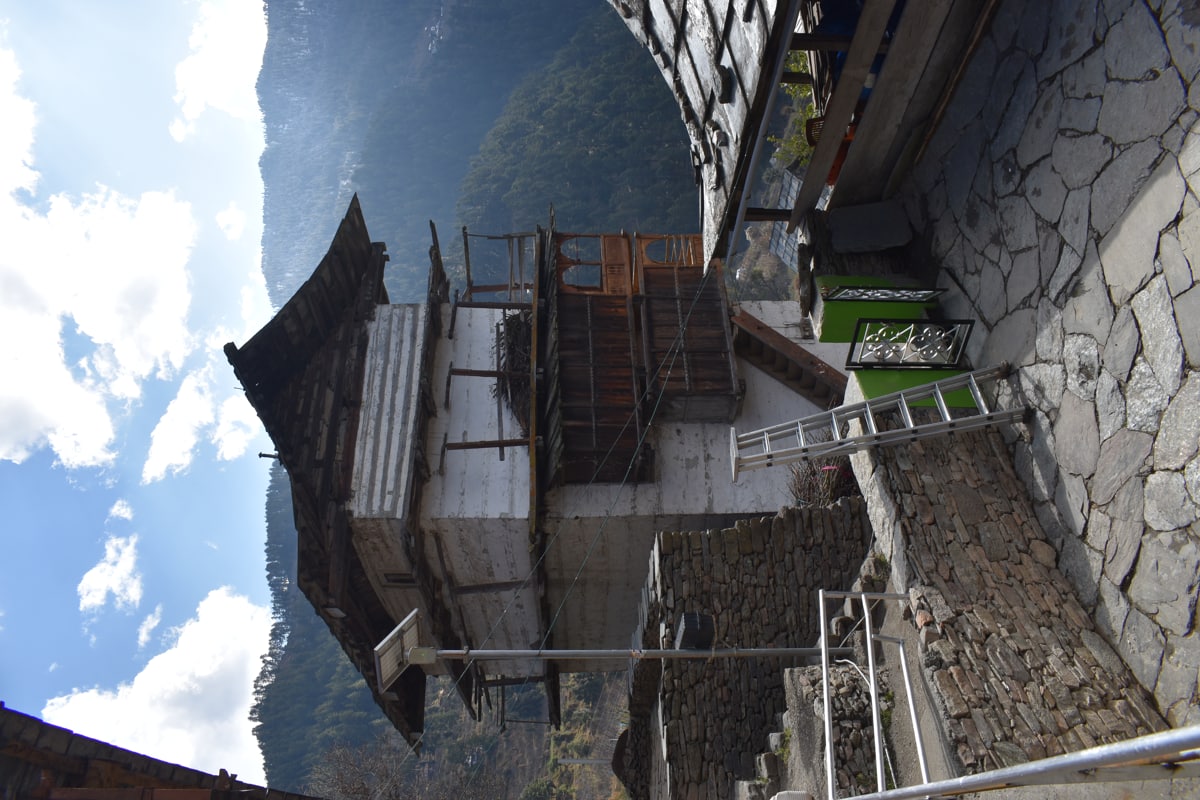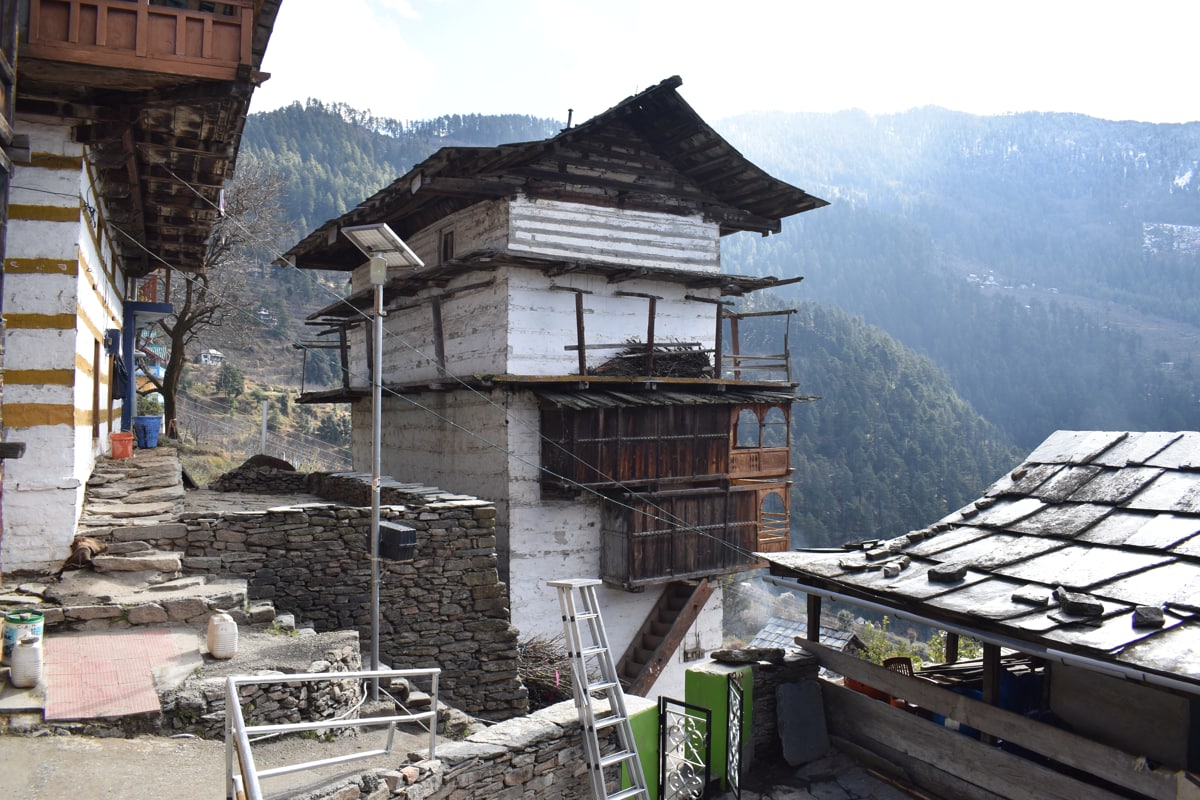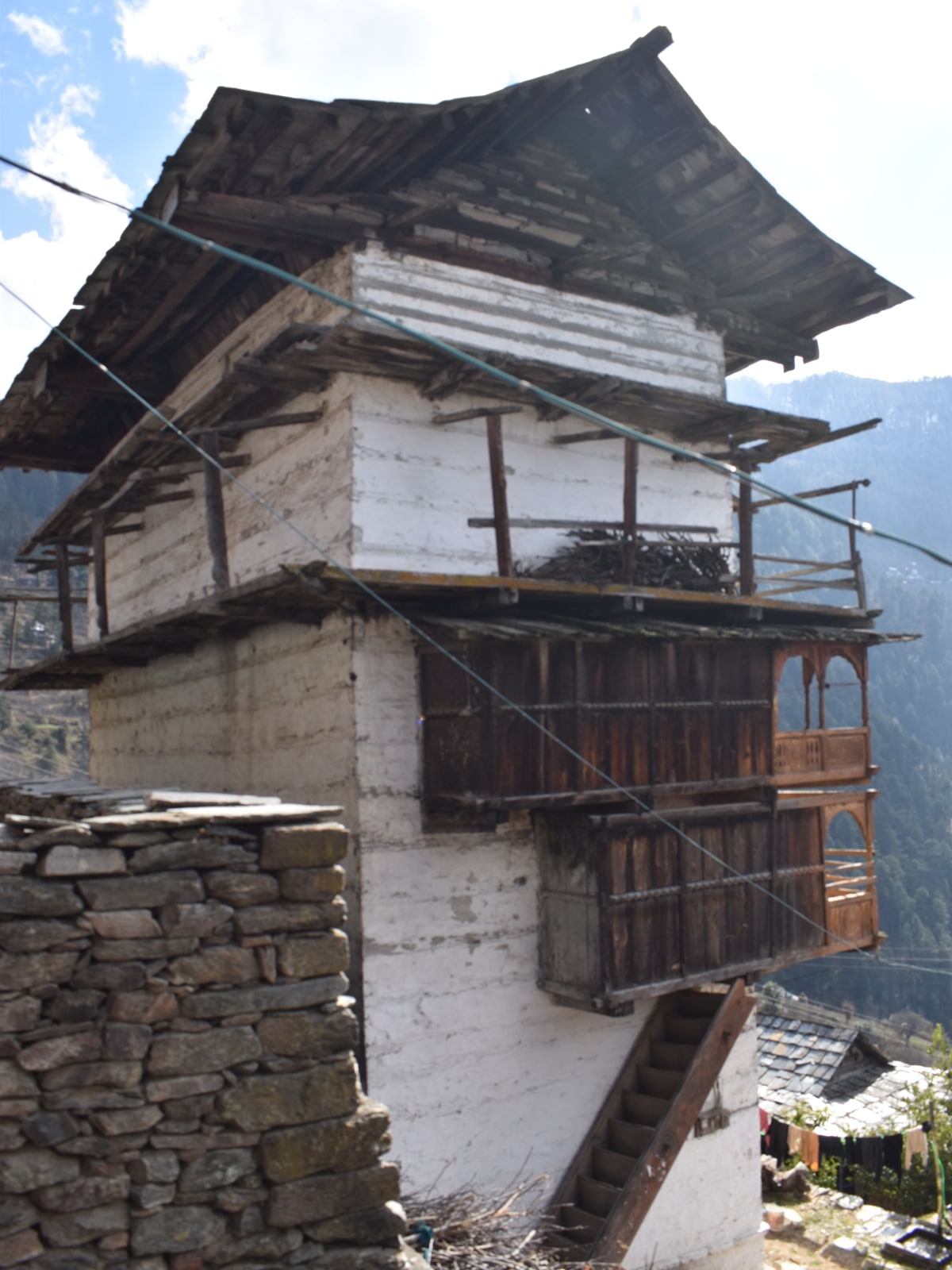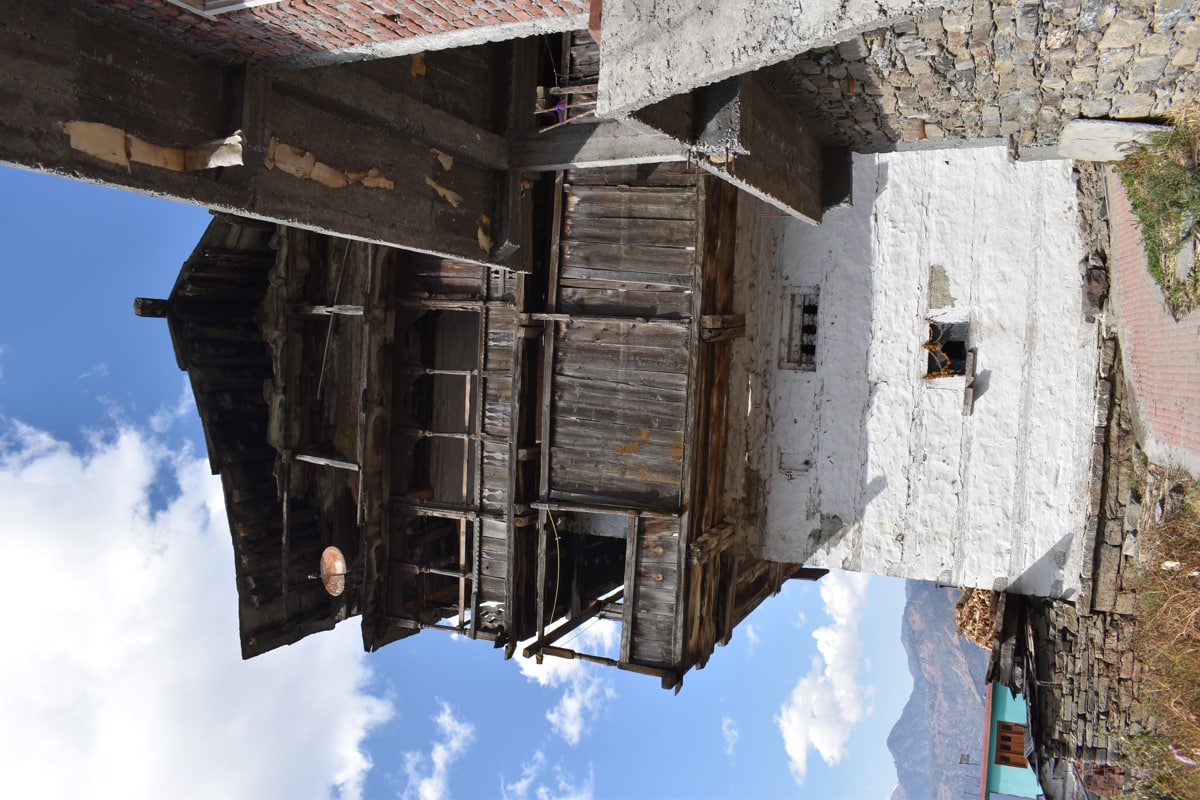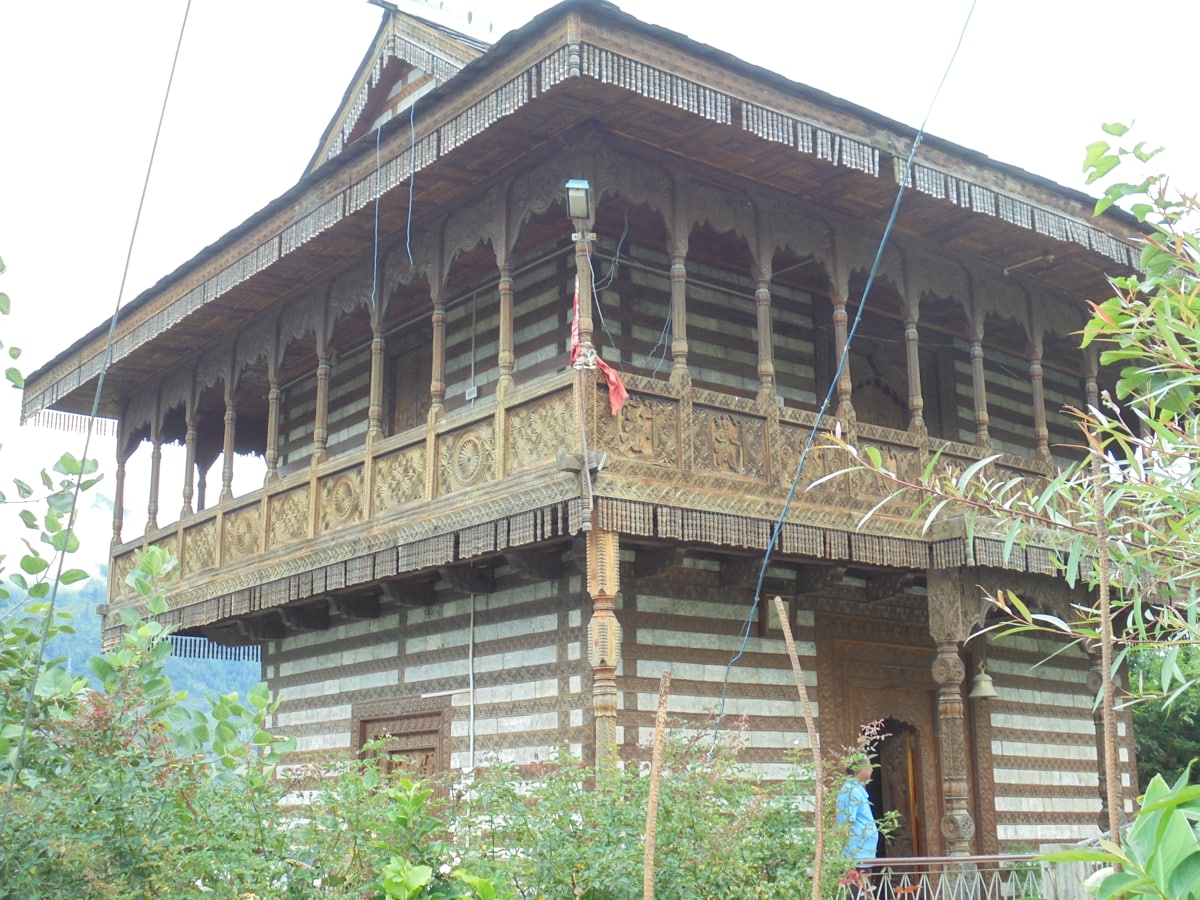Kath-Kunni

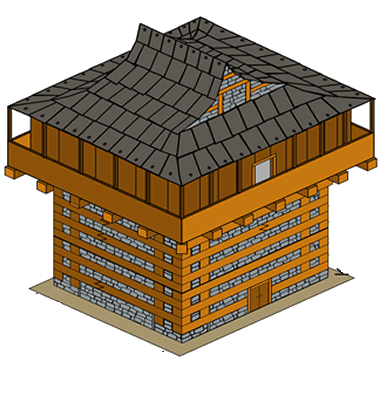
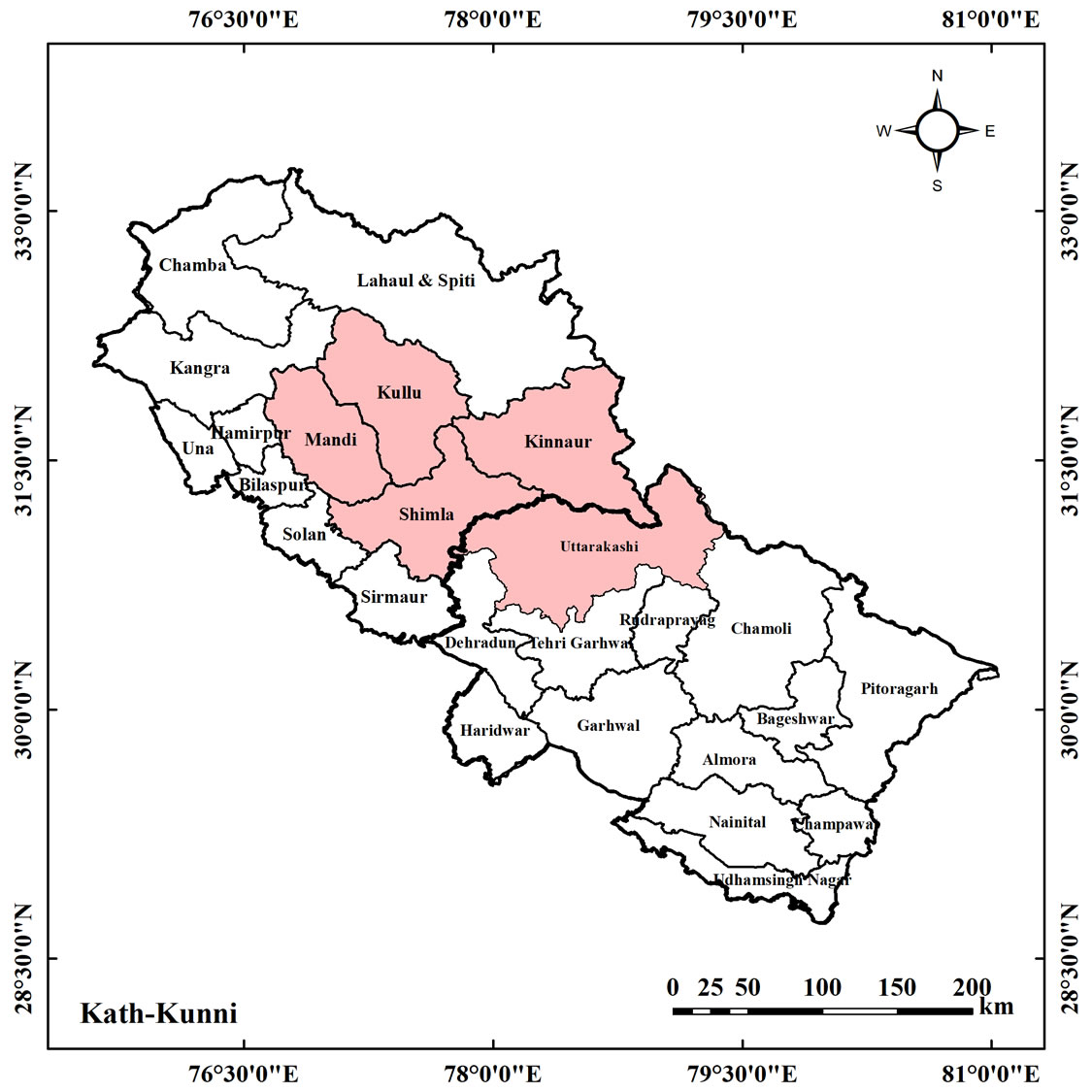
Kath-Kunni
Kath-kunni construction represents a traditional building style deeply rooted in regions like Shimla, Kullu, Kinnaur, and Mandi districts of Himachal Pradesh, as well as Uttarkashi in Uttarakhand.
Also known as Koti-Banal architecture in parts of Uttarakhand, Kath-kunni derives its name from its primary construction materials, where 'Kath' refers to timber and 'Kunni' denotes corners. This method, favored by people across various socioeconomic levels, thrives in high-altitude areas abundant in timber.
The technique involves utilizing locally sourced stones for walls, Deodar/Kail timber for structural elements, and mud for insulation. Though once prevalent, the depletion of timber resources has halted the construction of new Kath-kunni buildings. Yet, renovations are observable, particularly in places like Naggar and Kullu. Kath-kunni structures boast remarkable longevity due to durable materials like dressed stones and Deodar wood, offering excellent waterproofing.
Generations have witnessed these buildings enduring, with some standing for four to five generations or more, according to occupants' recollections during field surveys. Villages such as Sainj, Rohru, and Chopal in Shimla, along with others in Kullu, Kinnaur, and Mandi districts of Himachal Pradesh, and around Rajgarhi in Uttarakhand, host these timeless structures. Despite their resilience, these areas fall within Seismic Zones IV or V as per India's seismic zonation map (BIS 2016).
Explore beautiful designs
The technique involves utilizing locally sourced stones for walls, Deodar/Kail timber for structural elements, and mud for insulation.
